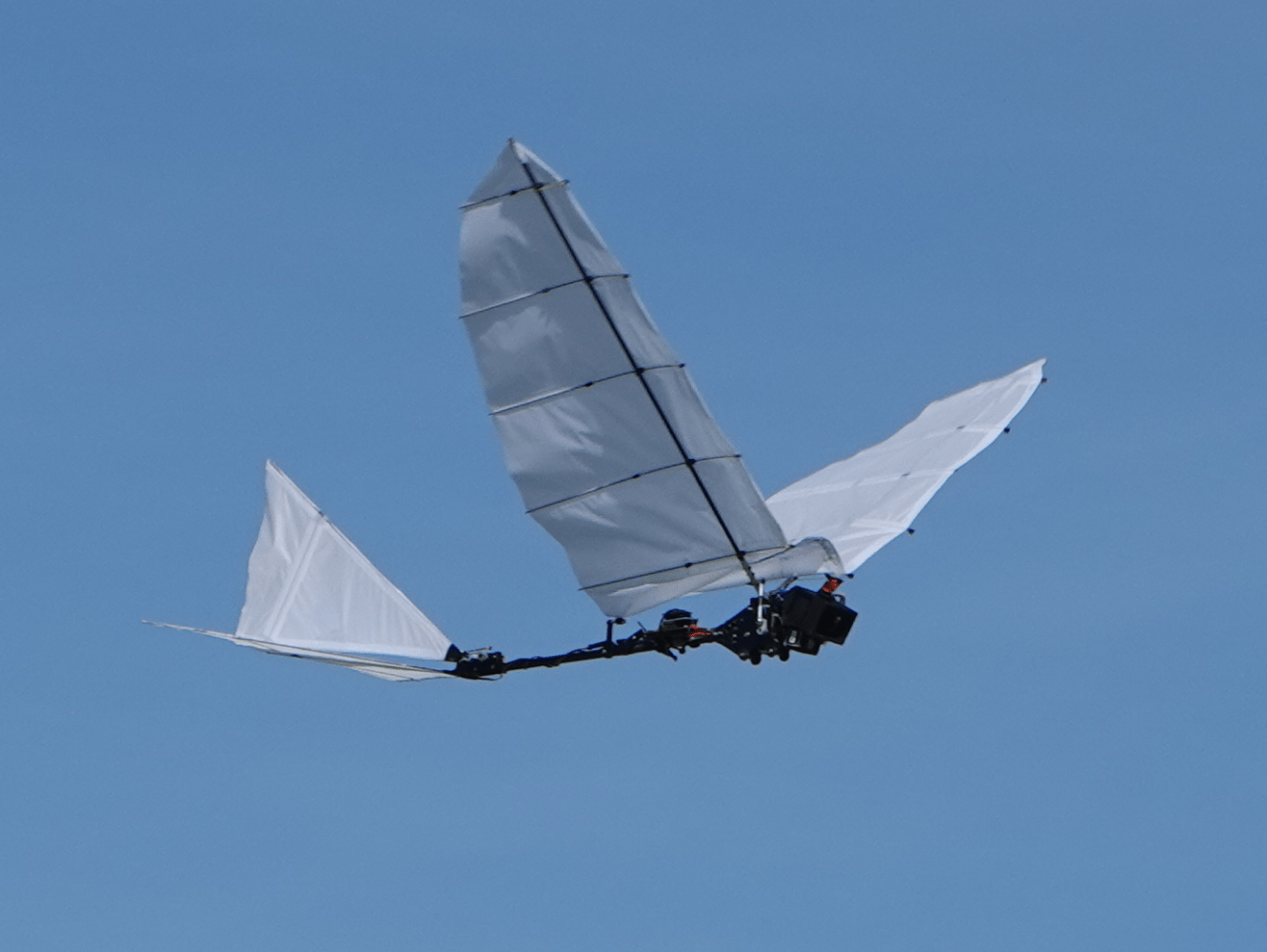
Researchers in Europe are looking for new ways to build better drones. One of the most promising techniques in doing so, it turns out, is to make them as much like birds as possible.
Wing-flapping, beak-equipped drone
A major part of that work is being carried out by the European Union-funded GRIFFIN program. Its main objective is to create robotic birds capable of doing everything drones can, and a lot more. Articulated, flapping wings are designed to considerably conserve battery life through gliding and other reactions with wind currents. Simulated talons will allow craft to land on curved objects or grasp vertical ones like poles. And safe components making up folding wings and other parts will permit direct contact and interaction with humans that the spinning rotors of most drones don’t allow.
The project is headed by Anibal Ollero, an electrical engineer at Spain’s University of Seville. The ornithopters being developed there – aircraft that fly by flapping their wings – can do most things drones can, thanks to various onboard apps. But they can also carry out certain manual tasks using their robotic wings, beaks, and talons. The absence of rotors, meanwhile, radically reduces the noise they make in flight, and may ultimately permit them to do things like land on injured humans, take biometric measurements, or affix masks to people stuck in a dangerous hazmat scenarios.
Robotic birds flying high by 2030
Development still has a long way to go. But Ollero told the EU’s research and innovation magazine Horizons that his unit has been successful with flapping wing flight in indoor and outdoor testing. They’ve also pulled off landings on surfaces 7 to 10 inches wide. The next major challenges, Olleo says, is to use onboard machine learning and other artificial intelligence to enable automatically response to changing external factors like wind currents or uneven surfaces that may be used to land.
What we want to demonstrate is these combined capabilities: being able to fly while saving energy, being able to perch, and being able to manipulate their limbs like a bird… There is a lot of work to do on the integration of new technologies related to material science, mechanics, aerodynamics and artificial intelligence in our robotic birds.
Despite that, Ollero believes his ornithopters may be performing practical tasks by the end of this decade. That effort will be aided by so-called shape-memory alloys that can be used to replicate real bird anatomy like beaks or claws. The rapid progress of miniaturization of all kinds of things – especially tech components – will also be of great help. Because as consumer drone makers know, the power and diversity of apps loaded on craft is only limited by weight they add before becoming physically burdensome.
Meantime, Ollero and his partners continue trying to make their robot more and more like an actual bird. Not surprisingly, that involves a lot of time watching and analyzing all sorts of feathered critters in flight. Less obvious, however, is how much interest one kind bird has attracted: the unloved, often derided “rat with wings.”
Pigeons, it turns out, are masters of fast, precise flight and reaction in crowded urban settings, while also being able to fly incredibly long distances other species can’t. What’s for a drone not to love?
Photo: GRVC Robotics Lab
FTC: We use income earning auto affiliate links. More.




Comments